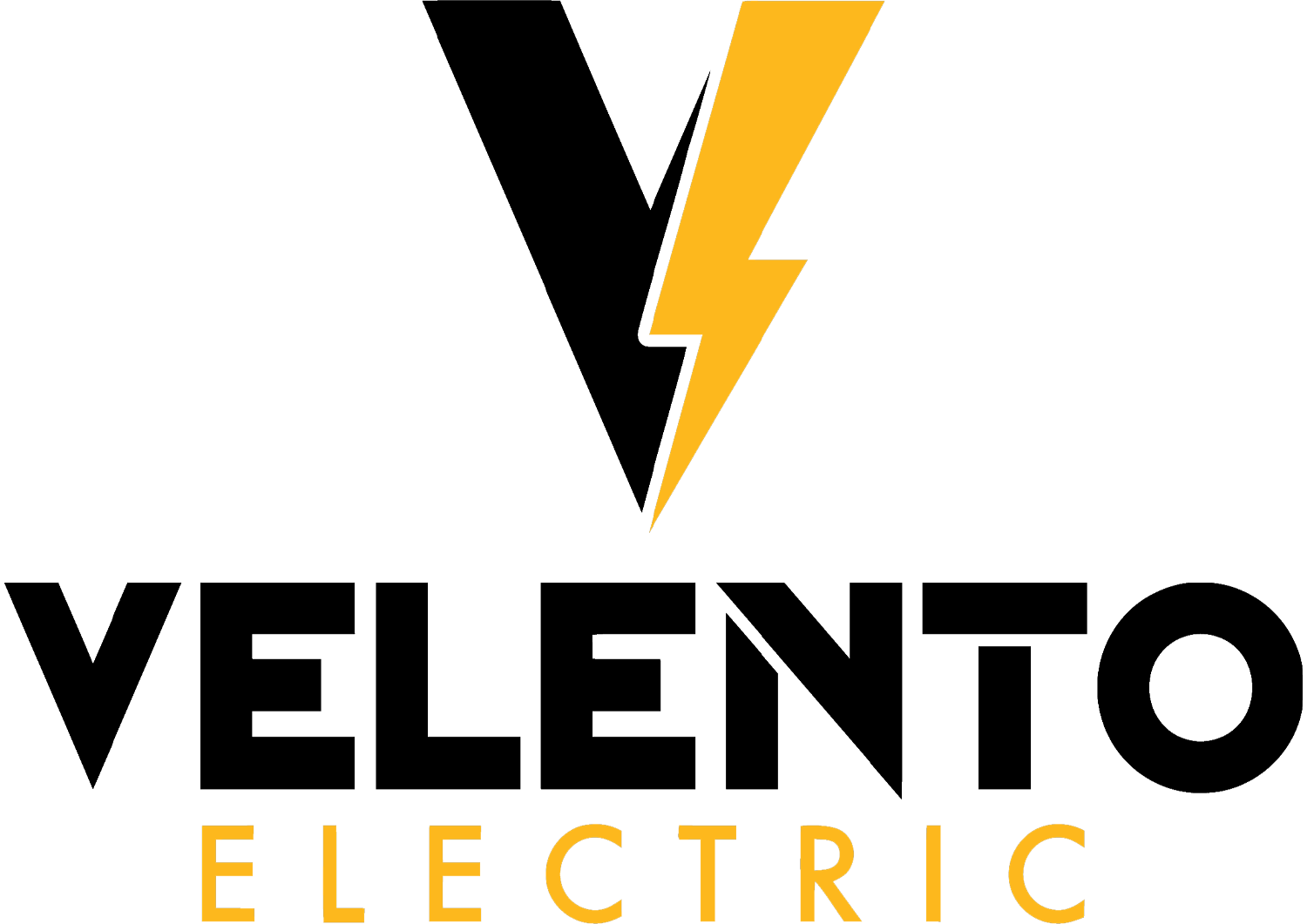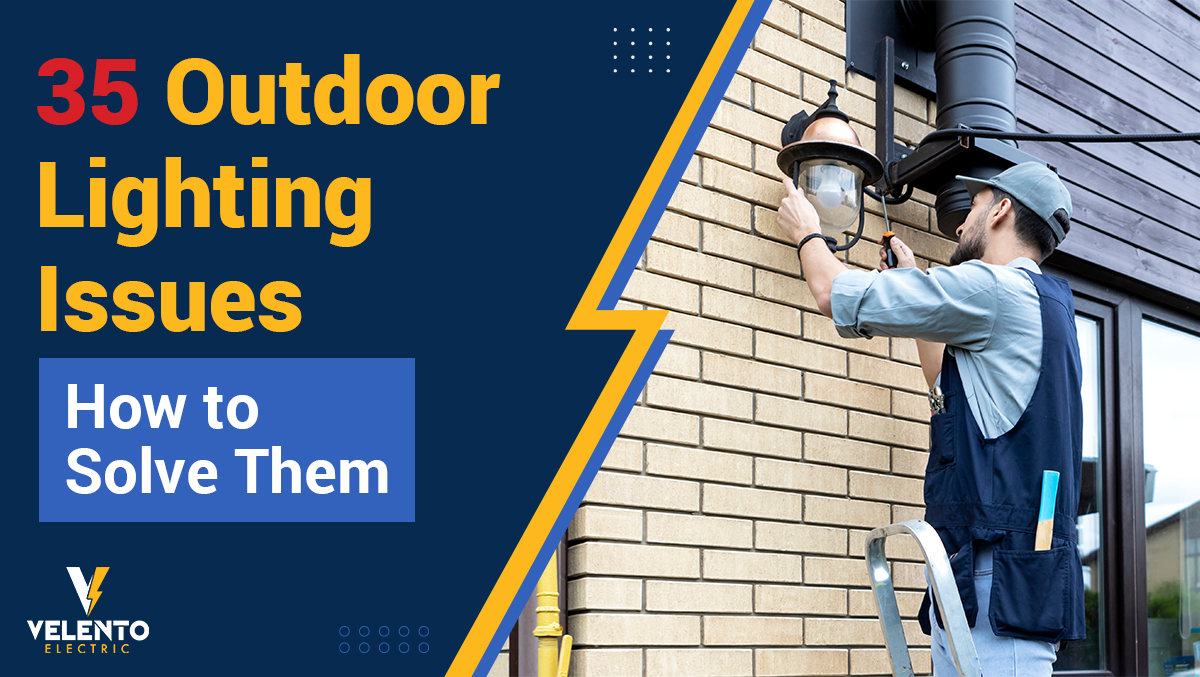Outdoor lighting can significantly enhance the aesthetics, safety, and functionality of your outdoor spaces. However, several common issues can arise, affecting the performance and effectiveness of your outdoor lighting system. Here are some common outdoor lighting issues and how to solve them:
- Inadequate Lighting Coverage
Issue:
- Dark Spots: Areas in your yard or driveway may remain poorly lit, creating dark spots that reduce visibility and safety.
Solution:
- Additional Fixtures: Install additional light fixtures to ensure even coverage. Use path lights, spotlights, and floodlights to cover different areas.
- Adjust Angles: Adjust the angles of existing lights to better distribute light and eliminate dark spots.
- Higher Wattage Bulbs: Use higher wattage bulbs where appropriate, but ensure they are compatible with your fixtures.
- Glare and Light Pollution
Issue:
- Excessive Brightness: Lights that are too bright can cause glare, making it uncomfortable for you and your neighbors.
- Light Pollution: Poorly directed lights can contribute to light pollution, affecting the natural environment and disrupting sleep.
Solution:
- Use Shielded Fixtures: Install fixtures with shields or hoods to direct light downward and reduce glare.
- Proper Positioning: Position lights to minimize glare and focus on illuminating specific areas rather than broad coverage.
- Dimmer Switches: Install dimmer switches to adjust the brightness as needed.
- Faulty Wiring and Electrical Issues
Issue:
- Intermittent Lighting: Lights flicker or turn off unexpectedly, indicating potential wiring problems.
- Short Circuits: Poor wiring can lead to short circuits, posing a safety hazard.
Solution:
- Professional Inspection: Have a qualified electrician inspect the wiring and fix any issues. Ensure outdoor wiring is suitable for exterior use.
- Weatherproof Connections: Use weatherproof connectors and junction boxes to protect wiring from moisture and other elements.
- Regular Maintenance: Regularly check and maintain wiring to prevent deterioration and potential hazards.
- Energy Inefficiency
Issue:
- High Energy Bills: Using inefficient lighting can lead to high energy consumption and increased electricity bills.
Solution:
- LED Bulbs: Replace traditional incandescent or halogen bulbs with energy-efficient LED bulbs, which consume less power and have a longer lifespan.
- Solar Lights: Consider using solar-powered lights for areas that receive adequate sunlight during the day.
- Timers and Motion Sensors: Install timers and motion sensors to ensure lights are only on when needed, reducing energy waste.
- Weather-Related Damage
Issue:
- Water Damage: Outdoor lights can be damaged by rain, snow, and humidity, leading to corrosion and electrical issues.
- Extreme Temperatures: Extreme cold or heat can affect the performance and longevity of outdoor lighting fixtures.
Solution:
- Weatherproof Fixtures: Use weatherproof and durable lighting fixtures designed to withstand outdoor conditions.
- Proper Sealing: Ensure all fixtures are properly sealed to prevent water ingress. Check and maintain seals regularly.
- Regular Inspections: Inspect your lighting system regularly for signs of weather-related damage and replace or repair components as necessary.
- Pest and Wildlife Interference
Issue:
- Damage by Animals: Animals and insects can damage outdoor lighting fixtures, wiring, and bulbs.
- Nest Building: Birds and insects may build nests around or inside fixtures, causing obstructions and potential fire hazards.
Solution:
- Animal-Resistant Fixtures: Use fixtures designed to resist tampering by animals and insects.
- Regular Cleaning: Regularly clean and inspect fixtures to remove nests and deter pests.
- Protective Covers: Install protective covers or cages around fixtures to prevent animals from accessing them.
- Poor Aesthetic Integration
Issue:
- Mismatched Fixtures: Inconsistent or poorly chosen lighting fixtures can detract from the overall aesthetic of your outdoor space.
- Harsh Lighting: Inappropriate lighting can create harsh shadows and unflattering effects.
Solution:
- Consistent Design: Choose lighting fixtures that complement the style and design of your outdoor space. Stick to a consistent theme and color scheme.
- Soft Lighting: Use softer lighting options such as warm white LEDs to create a more inviting and pleasant ambiance.
- Strategic Placement: Place lights strategically to highlight landscape features, architectural elements, and pathways.
- Overgrown Vegetation Blocking Light
Issue:
- Blocked Light: Overgrown plants and trees can block light from reaching intended areas, reducing effectiveness.
Solution:
- Regular Trimming: Regularly trim vegetation to keep pathways and important areas well-lit.
- Adjustable Fixtures: Use adjustable fixtures that can be repositioned to accommodate plant growth.
- Elevated Lights: Install lights on poles or elevated fixtures to prevent obstruction by plants.
- Fixture Damage or Wear and Tear
Issue:
- Physical Damage: Outdoor lights can be damaged by impact, wear, and tear, reducing their effectiveness and lifespan.
Solution:
- Durable Materials: Choose fixtures made from durable materials such as stainless steel, aluminum, or heavy-duty plastic.
- Protective Guards: Use protective guards or enclosures for fixtures in high-traffic or vulnerable areas.
- Regular Maintenance: Regularly check for and repair any physical damage to ensure long-term functionality.
- Inconsistent Lighting Timing
Issue:
- Manual Operation: Manually turning lights on and off can lead to inconsistent lighting, affecting security and convenience.
Solution:
- Automated Systems: Install automated lighting systems with timers or smart controls to ensure consistent operation.
- Photocell Sensors: Use photocell sensors that automatically turn lights on at dusk and off at dawn.
- Light Fixture Corrosion
Issue:
- Corrosion: Outdoor light fixtures are exposed to the elements, which can cause rust and corrosion over time, particularly in humid or coastal environments.
Solution:
- Corrosion-Resistant Materials: Choose fixtures made of corrosion-resistant materials such as stainless steel, brass, or powder-coated aluminum.
- Protective Coatings: Apply protective coatings or sealants to fixtures to shield them from moisture and salt.
- Regular Cleaning: Clean fixtures regularly to remove dirt, salt, and other corrosive elements.
- Bulb Burnout
Issue:
- Frequent Burnouts: Bulbs in outdoor fixtures burn out more frequently due to exposure to the elements or incorrect bulb types.
Solution:
- Use Outdoor-Rated Bulbs: Ensure that bulbs are rated for outdoor use and can withstand temperature variations and moisture.
- LED Bulbs: Use LED bulbs, which have a longer lifespan and are more energy-efficient compared to incandescent or halogen bulbs.
- Check Wattage: Use bulbs with the correct wattage as recommended by the fixture manufacturer to avoid overheating.
- Inconsistent Lighting Colors
Issue:
- Mismatched Colors: Different lighting fixtures and bulbs can produce inconsistent color temperatures, leading to a disjointed appearance.
Solution:
- Uniform Bulbs: Use the same type and color temperature of bulbs throughout your outdoor lighting setup.
- Color Temperature: Choose a consistent color temperature (e.g., warm white, cool white) that complements your outdoor space.
- Quality Brands: Stick to high-quality, reputable brands to ensure consistent color output and longevity.
- Inadequate Security Lighting
Issue:
- Poor Security: Insufficient or poorly positioned lighting can create security vulnerabilities, leaving areas around your property dark and inviting to intruders.
Solution:
- Motion Sensors: Install motion-sensor lights to detect movement and illuminate areas only when needed, enhancing security and conserving energy.
- Strategic Placement: Place lights at entry points, pathways, and other vulnerable areas to deter potential intruders.
- Bright Floodlights: Use bright, wide-angle floodlights to cover larger areas and eliminate hiding spots.
- Light Trespass and Nuisance to Neighbors
Issue:
- Light Trespass: Outdoor lighting that spills over into neighboring properties can be a nuisance and may violate local ordinances.
Solution:
- Directional Lighting: Use fixtures that direct light downward and focus it on specific areas to reduce light spill.
- Adjustable Fixtures: Adjust the angle and positioning of fixtures to minimize impact on neighboring properties.
- Shielding: Add shields or baffles to fixtures to block unwanted light from reaching adjacent areas.
- Damage from Landscaping Activities
Issue:
- Accidental Damage: Lawn mowers, trimmers, and other landscaping equipment can accidentally damage outdoor lighting fixtures.
Solution:
- Protective Covers: Use protective covers or guards on fixtures to shield them from accidental impact.
- Sturdy Placement: Securely install fixtures in locations less likely to be affected by landscaping activities.
- Awareness: Educate landscaping personnel about the locations of lighting fixtures to prevent accidental damage.
- Insect Attraction
Issue:
- Insect Buildup: Outdoor lights attract insects, which can accumulate around fixtures and cause maintenance issues.
Solution:
- Insect-Repellent Bulbs: Use bulbs designed to repel insects, such as yellow “bug” lights.
- LED Lights: LED lights tend to attract fewer insects compared to traditional incandescent bulbs.
- Regular Cleaning: Clean fixtures regularly to remove insects and prevent buildup.
- Inadequate Control Systems
Issue:
- Manual Operation: Manually controlling outdoor lights can be inconvenient and lead to inconsistent lighting schedules.
Solution:
- Smart Lighting Systems: Install smart lighting systems that allow remote control via smartphone apps, voice commands, or automated schedules.
- Timers and Photocells: Use timers and photocells to automate lighting based on time of day or ambient light levels.
- Fixture Overheating
Issue:
- Overheating: Outdoor lighting fixtures can overheat, leading to reduced bulb lifespan and potential fire hazards.
Solution:
- Proper Ventilation: Ensure fixtures have adequate ventilation to dissipate heat.
- Correct Bulb Wattage: Use bulbs with the recommended wattage for each fixture to prevent overheating.
- LED Bulbs: Switch to LED bulbs, which generate less heat compared to incandescent or halogen bulbs.
- Inefficient Lighting Design
Issue:
- Poor Layout: Inefficient lighting design can result in uneven lighting, wasted energy, and unsatisfactory aesthetics.
Solution:
- Professional Design: Consider hiring a lighting designer to create an efficient and aesthetically pleasing layout.
- Layered Lighting: Use a combination of ambient, task, and accent lighting to create a balanced and effective lighting scheme.
- Trial and Adjustment: Test different lighting setups and make adjustments to achieve the desired effect.
- Smart Lighting Systems
Issue:
- Manual Control Limitations: Manual control of outdoor lighting can be cumbersome and inefficient.
Solution:
- Smart Lighting Integration: Incorporate smart lighting systems that allow for automated schedules, remote control, and integration with other smart home devices.
- Voice Control: Use voice assistants like Amazon Alexa, Google Assistant, or Apple Siri to control your outdoor lights.
- Geofencing: Implement geofencing technology to automatically turn lights on or off based on your location.
- Solar-Powered Lighting
Issue:
- High Energy Costs: Traditional outdoor lighting can lead to high energy bills.
Solution:
- Solar Lighting: Install solar-powered lights that harness sunlight during the day and provide illumination at night, reducing energy costs and environmental impact.
- Solar Path Lights: Use solar path lights to illuminate walkways without the need for wiring.
- Solar Floodlights: Employ solar floodlights for security and area lighting.
- Low Voltage Lighting
Issue:
- High Voltage Risks: High voltage lighting systems can be dangerous and more complex to install.
Solution:
- Low Voltage Systems: Utilize low voltage lighting systems (12V) for safer and easier installation. These systems are energy-efficient and suitable for most landscape lighting needs.
- Transformers: Use transformers to convert standard 120V household current to 12V for low voltage lighting.
- Color-Changing LEDs
Issue:
- Static Lighting: Fixed-color lighting can limit the ambiance and versatility of outdoor spaces.
Solution:
- RGB LEDs: Install color-changing RGB LED lights that can be adjusted to different colors and intensities, allowing for dynamic lighting effects.
- Control Systems: Use remote controls or smartphone apps to change the colors and settings of your RGB lights.
- Motion-Activated Lighting
Issue:
- Continuous Operation: Continuous operation of lights can lead to unnecessary energy use and wear on fixtures.
Solution:
- Motion Sensors: Install motion-activated lights that turn on only when movement is detected, enhancing security and energy efficiency.
- Adjustable Sensitivity: Use sensors with adjustable sensitivity and range to customize activation settings.
- Decorative Lighting Fixtures
Issue:
- Aesthetic Limitations: Standard lighting fixtures may not complement the design and aesthetic of your outdoor spaces.
Solution:
- Decorative Fixtures: Choose decorative lighting fixtures such as lanterns, string lights, and garden lamps that enhance the visual appeal of your outdoor areas.
- Thematic Lighting: Select fixtures that match the theme or style of your landscape, such as rustic, modern, or vintage designs.
- Smart Landscape Lighting Design
Issue:
- Inefficient Design: Poorly planned lighting can lead to uneven illumination and wasted energy.
Solution:
- Landscape Lighting Design: Hire a professional landscape lighting designer to create a cohesive and efficient lighting plan.
- Layered Lighting Approach: Use a combination of ambient, task, and accent lighting to create depth and highlight key features.
- Advanced Weatherproofing
Issue:
- Weather Damage: Outdoor lights are vulnerable to damage from rain, snow, and other weather conditions.
Solution:
- IP Ratings: Choose fixtures with high IP (Ingress Protection) ratings that indicate resistance to dust and water (e.g., IP65, IP67).
- Corrosion-Resistant Materials: Use fixtures made from materials like stainless steel, brass, or powder-coated aluminum that resist corrosion.
- Dark Sky-Friendly Lighting
Issue:
- Light Pollution: Outdoor lighting can contribute to light pollution, affecting the natural night environment.
Solution:
- Dark Sky Compliant Fixtures: Use fixtures designed to minimize light pollution by directing light downward and reducing glare.
- Proper Shielding: Install shields or baffles to prevent light from spilling into the sky or neighboring properties.
- Integrated Lighting Systems
Issue:
- Fragmented Control: Managing multiple lighting systems can be complex and inefficient.
Solution:
- Centralized Control: Implement integrated lighting systems that allow for centralized control of all outdoor lights.
- Unified Platforms: Use platforms that integrate with other smart home systems for cohesive control and automation.
- Sustainable Lighting Practices
Issue:
- Environmental Impact: Traditional lighting systems can have a significant environmental footprint.
Solution:
- Energy-Efficient Solutions: Prioritize energy-efficient solutions like LED and solar-powered lights.
- Recycling Programs: Dispose of old fixtures and bulbs through recycling programs to minimize environmental impact.
- Timed Lighting Controls
Issue:
- Manual Operation: Manually turning lights on and off can be inconsistent and inefficient.
Solution:
- Programmable Timers: Use programmable timers to automate lighting schedules, ensuring lights are on only when needed.
- Astronomical Timers: Employ astronomical timers that adjust based on sunset and sunrise times for your location.
- Battery-Powered Lighting
Issue:
- Wiring Challenges: Running electrical wires to all areas of a yard can be difficult and expensive.
Solution:
- Battery-Powered Lights: Use battery-powered lights for areas where wiring is impractical. These lights can be solar-charged or use replaceable batteries.
- Rechargeable Options: Opt for rechargeable battery lights to reduce long-term costs and environmental impact.
- UV-Resistant Fixtures
Issue:
- Sun Damage: Prolonged exposure to sunlight can degrade and discolor outdoor lighting fixtures.
Solution:
- UV-Resistant Materials: Choose fixtures made from UV-resistant materials to withstand sun exposure and maintain their appearance.
- Protective Coatings: Apply UV-protective coatings to extend the life of existing fixtures.
- Integrated Security Lighting
Issue:
- Separate Security Systems: Managing separate security and lighting systems can be inefficient.
Solution:
- Integrated Systems: Use integrated security lighting systems that combine lighting with surveillance cameras and alarms.
- Smart Sensors: Employ smart sensors that trigger lights and cameras simultaneously upon detecting motion.
Advancing your outdoor lighting setup with smart technologies, sustainable practices, and innovative solutions can significantly enhance the functionality, aesthetics, and security of your outdoor spaces. By addressing common issues and implementing the solutions outlined, you can create a more efficient, attractive, and environmentally friendly lighting system that meets your needs and preferences. Regular maintenance and updates will ensure your outdoor lighting remains effective and enjoyable for years to come.












